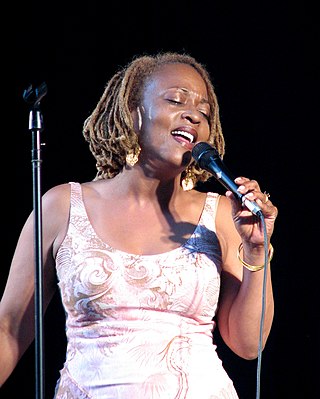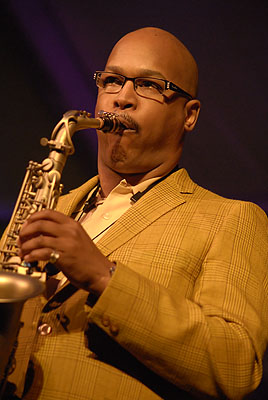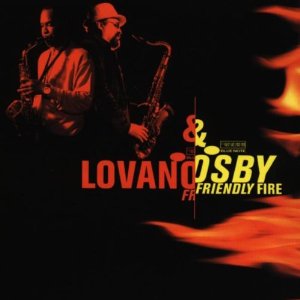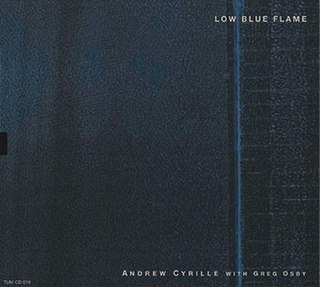Free jazz or Free Form in the early- to mid-1970s is a style of avant-garde jazz or an experimental approach to jazz improvisation that developed in the late 1950s and early 1960s when musicians attempted to change or break down jazz conventions, such as regular tempos, tones, and chord changes. Musicians during this period believed that the bebop and modal jazz that had been played before them was too limiting, and became preoccupied with creating something new. The term "free jazz" was drawn from the 1960 Ornette Coleman recording Free Jazz: A Collective Improvisation. Europeans tend to favor the term "free improvisation". Others have used "modern jazz", "creative music", and "art music".

Charles Edward Haden was an American jazz double bass player, bandleader, composer and educator whose career spanned more than 50 years. Building on the work of predecessors such as Jimmy Blanton and Charles Mingus, Haden helped to revolutionize the harmonic concept of bass playing in jazz, evolving a style that sometimes complemented the soloist, and other times moved independently, liberating bassists from a strictly accompanying role, to allow more direct participation in group improvisation.

Cassandra Wilson is an American jazz singer, songwriter, and producer from Jackson, Mississippi. She is one of the most successful female Jazz singers and has been described by critic Gary Giddins as "a singer blessed with an unmistakable timbre and attack [who has] expanded the playing field" by incorporating blues, country, and folk music into her work. She has won numerous awards, including two Grammys, and was named "America's Best Singer" by Time magazine in 2001.

Greg Osby is an American saxophonist and composer.

Steve Coleman is an American saxophonist, composer, bandleader and music theorist. In 2014, he was named a MacArthur Fellow.
Michael Cain is a pianist and composer.
Winter & Winter is a record label in Munich, Germany that specializes in jazz, classical and improvised music. It was founded by Stefan Winter following the demise of his JMT Records label.

Gary Thomas is an American jazz saxophonist and flautist, born in Baltimore, Maryland. He was a member of Jack DeJohnette's Special Edition band and has worked with John McLaughlin, Herbie Hancock, Pat Metheny, John Scofield, Jim Hall, Dave Holland, Greg Osby, Wayne Shorter, Ravi Coltrane, Cassandra Wilson, Wallace Roney, Steve Coleman, and Miles Davis.

Lonnie Plaxico is an American jazz double bassist.

Terri Lyne Carrington is an American jazz drummer, composer, producer, and educator. She has played with Dizzy Gillespie, Stan Getz, Clark Terry, Herbie Hancock, Wayne Shorter, Joe Sample, Al Jarreau, Yellowjackets, and many others. She toured with each of Hancock's musical configurations between 1997 and 2007.

JMT Records was a German record label founded by Stefan Winter. It was based in Munich, Germany, specialized in contemporary jazz, and operated from 1985 until 1995.
Jeffrey Chan is an American saxophonist and composer.
Dixieland jazz, also referred to as traditional jazz, hot jazz, or simply Dixieland, is a style of jazz based on the music that developed in New Orleans at the start of the 20th century. The 1917 recordings by the Original Dixieland Jass Band, fostered awareness of this new style of music.

Friendly Fire is an album by the American jazz saxophonists Joe Lovano and Greg Osby recorded in 1998 and released on the Blue Note label.

Prime Directive is an album by the Dave Holland Quintet recorded over three days in December 1998 and released on ECM October the following year. The quintet features saxophonist Chris Potter, trombonist Robin Eubanks, vibraphonist Steve Nelson, and drummer Billy Kilson.
Anthony Tidd is a British-born bass player, composer and music producer, who has been based in the United States since 1996. A well-known name on the international jazz scene and veteran touring bass player, he has graced stages alongside many staple names, including Steve Coleman, The Roots, Rudresh Mahanthappa, Wayne Krantz, Meshell Ndegeocello, Common, and Jill Scott. Currently, Tidd regularly tours and records with alto saxophonist Steve Coleman, is the Creative Music Program Director at the Kimmel Center for the Performing Arts in Philadelphia. and is the owner of recording/production studio Tidbit Sonos.

Low Blue Flame is an album by drummer Andrew Cyrille. It was recorded in January 2005 at Kampo Studios in New York City, and was released by Tum Records in 2006. On the album, Cyrille is joined by saxophonist Greg Osby. Cyrille and Osby met backstage after sharing a bill at a festival in France, and first performed publicly at Tonic in New York City in early 2004.

Rhythm People (The Resurrection of Creative Black Civilization) is an album by the American saxophonist Steve Coleman, released in 1990. He is credited with his band, the Five Elements.

Structure is an album by drummer Terri Lyne Carrington on which she is joined by guitarist Adam Rogers, bassist Jimmy Haslip, and saxophonist Greg Osby. It was recorded at Castle Oaks Studio in Calabasas, California during November 2003, and was released in 2004 by the German label ACT Music.

Inspiration is an album by multi-instrumentalist and composer Sam Rivers. It was recorded during September 1998 at Systems Two Recording Studio in Brooklyn, New York, at the same sessions that yielded the album Culmination, and was released in 1999 by BMG France. On the album, Rivers is joined by members of the Rivbea All-star Orchestra: saxophonists Greg Osby, Steve Coleman, Chico Freeman, Gary Thomas, and Hamiet Bluiett, trumpeters Baikida Carroll, James Zollar, Ralph Alessi, and Ravi Best, trombonists Art Baron, Joseph Bowie, and Ray Anderson, baritone horn player Joseph Daley, tubist Bob Stewart, bassist Doug Mathews, and drummer Anthony Cole.













